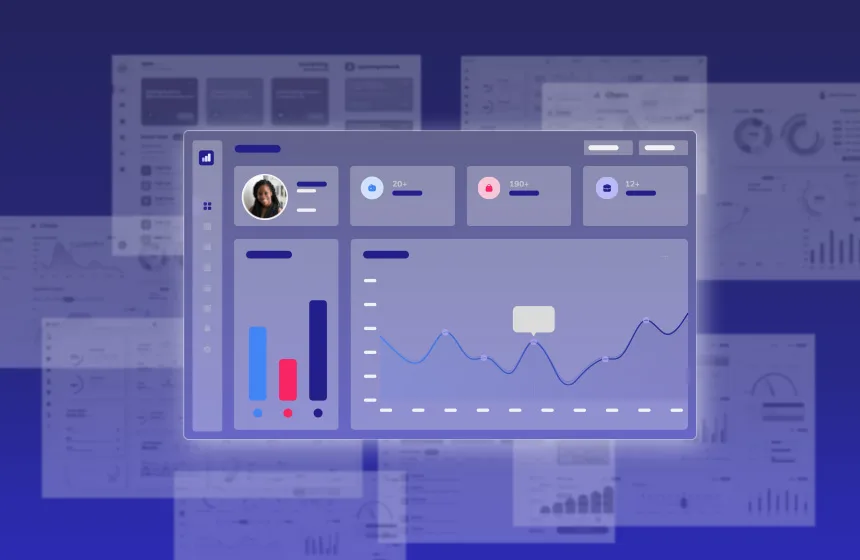Accelerate deals and increase win rates with the leading enterprise AI demo platform.
Demo-Led Growth: What the Best Teams Do Differently

October 14, 2025
Table of Contents
The era of gatekeeping product demos until late in the sales cycle is over. Today’s sophisticated buyers arrive armed with research, competitive intel, and clear expectations: show me how you solve my problem, and show me now.
At Demos Reimagined ’25, we brought together a diverse group of revenue professionals to explore how leading organizations are using demos as a growth engine. Hosted by Evan Powell (CRO and Co-Founder at Reprise), we were joined by Mike McGuinness (a self-described serial CRO from companies like Quickbase, Veracode, and HP), Brynn Bryson (Senior Demo Architect at iCIMS), and Rachel Tilghman (Senior AVP of Solutions Consulting at Braze).
What emerged was a comprehensive framework for rethinking when, how, and why we demonstrate products in modern B2B sales.
Demos as Consensus-Building Tools
Modern enterprise deals involve multiple stakeholders with competing priorities. The best demos have evolved into powerful consensus-building mechanisms that weave together different concerns into a unified narrative.
When selling to enterprise buyers, you’re demonstrating how the platform solves problems for marketing, IT, finance, and end users simultaneously. The key is making explicit connections between these different use cases so that diverse buying committees can see themselves in the solution.
This transforms demos from product tours into problem-solving sessions that align stakeholders on a shared vision. When done well, prospects see the demo as a preview of their own future state rather than a vendor pitch.
The Discostration: Discovery Meets Demonstration
The traditional “demo first or discovery first” debate misses the point entirely. Today’s buyers won’t tolerate lengthy discovery sessions before seeing proof you have a viable solution. They’ll simply move to a competitor.
The solution? Simultaneously conduct discovery and demonstration. Show a capability, watch for reactions, then pause to ask: how do you handle this today? What would change if you could do this differently?
The First Call Balance
For that critical first interaction, aim for roughly:
- 70% discovery: Understanding your customer’s business and building the relationship
- 30% demonstration: Proving viability and generating excitement
This approach respects that buyers are sophisticated and time-constrained. They’ve done their homework and they want to verify whether you can actually help in the first call, not after three qualification calls.
Measuring What Actually Matters
Progressive teams have moved beyond counting demos to measuring what predicts revenue outcomes.
Key Metrics to Track
Conversion rates and velocity: How quickly deals progress from stage to stage, not just demo volume.
The tipping point: There’s a threshold where additional demos actually decrease win rates. Too many demos often signals you lack a true champion with organizational power.
Talk-to-listen ratio: Teams that monopolize airtime see lower engagement. The best demos involve lots of customer talking — questions, concerns, and validation.
Preparation time: Track how long it takes to build, customize, and maintain demos. Extended prep times often signal a need for better tooling or reusable assets.
Matching Demo Types to Deal Stages
Not all demos are created equal. Smart teams deploy different approaches strategically throughout the sales cycle. One panelist offered a helpful framework using culinary analogies:
Early Stage: The Appetizer — “Art of the Possible”
Give prospects a taste of what’s possible. Short, visually compelling demos (5–10 minutes) showcase your best “dish,” beautifully plated. These can be interactive website demos or recorded overviews that generate interest without requiring deep technical prep.
Mid-Cycle: The Main Course — “The Julia Child Method”
Now it’s about trust and technical depth. Use pre-staged components to walk through how your solution addresses real pain points and integrates with their environment, much like Julia mixing prepared ingredients live to show mastery and authenticity.
Late Stage: The Cooking Class — Collaborative Proof of Concept
At this point, buyers are hands-on. They want to see administrative capabilities and envision implementation. Structure these sessions as guided “cooking classes,” where they can participate, but set boundaries so it doesn’t become free training before the deal closes.
The Strategic Use of Demo Resources
Solutions Engineers represent incredibly valuable, hard-to-scale resources. Treat SE involvement as strategic currency rather than a commodity deployed on every opportunity.
When to Deploy Your Best Resources
Empower SEs and demo architects to push back on poorly qualified demos. If an AE requests a demonstration without clear pain points, appropriate stakeholders, or basic qualification, the answer should be no.
The Give-Get Framework
For complex, resource-intensive demos like POCs or deep technical sessions, trade something for your investment. This might mean:
- Access to the economic buyer
- Meeting with key stakeholders
- Commitment to a specific timeline
- Subject matter expert participation from their side
The Tag-Teamed Sales Call
When both an AE and SE participate, it creates powerful dynamics. The SE controls the product narrative while the AE recognizes buying signals, asks strategic questions, and advances the business conversation. When choreographed well, it becomes a seamless performance that drives deals forward.
For simpler products or early qualification, arm SDRs with self-serve tools to preserve expensive SE capacity for opportunities that truly require expert guidance.
The Path Forward
Demo-led growth isn’t about doing more demonstrations. It’s about being strategic with how, when, and why you demonstrate.
Success requires:
- Reading buyer signals accurately
- Matching demo types to deal stages
- Measuring what predicts revenue, not just activity
- Continuously validating assumptions throughout the cycle
- Treating SEs as strategic assets that require thoughtful deployment
One critical insight that often gets overlooked: discovery isn’t a one-time activity before the first demo. Buyers’ contexts change constantly — priorities shift, budgets fluctuate, competitive intel arrives. The best demo professionals continuously ask: has anything changed since we last spoke? This ongoing validation ensures that by the time you prescribe a final solution, it’s rock-solid.
Organizations that embrace this evolution don’t just improve demo metrics, they fundamentally accelerate revenue by making every product interaction count. They empower their teams to say no to low-value opportunities while delivering exceptional experiences for qualified prospects who deserve their best work.
The future belongs to teams that understand demos aren’t just about showing software. They’re about solving problems, building consensus, and creating the future state that prospects can’t wait to make real.
Want to watch the full panel discussion? You can check out the recording of the session here.






